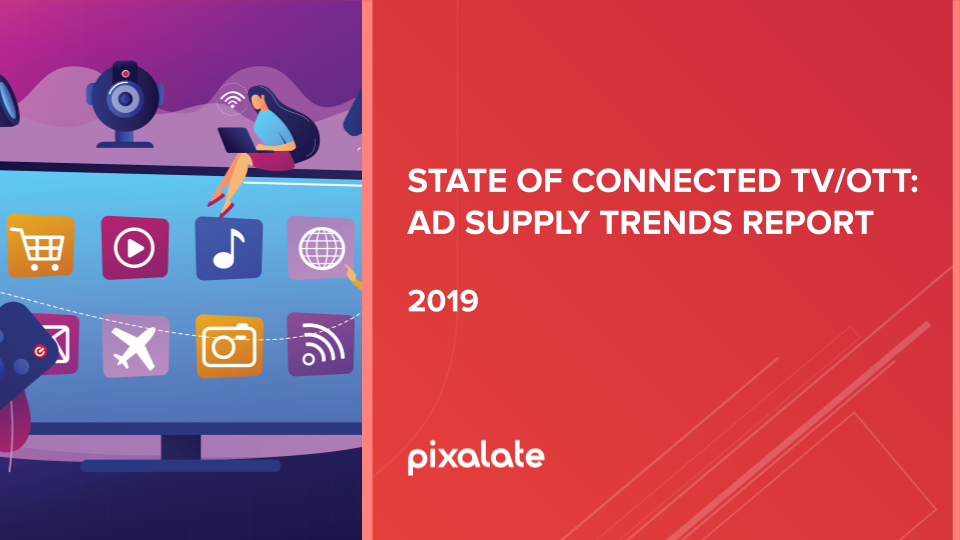
PALO ALTO, Feb. 12, 2020 — Pixalate, a global ad fraud intelligence and marketing compliance platform, today announced the release of its State of Connected TV/OTT: 2019 Ad Supply Trends Report, featuring granular analysis on the latest trends in Over-the-Top (OTT) and Connected TV (CTV) advertising.
Key Findings: 330% global growth in programmatic OTT/CTV ad transactions in 2019
OTT/CTV device market share is determined by the share of voice of programmatic OTT/CTV ad impressions based on the device the impressions were delivered to. OTT/CTV device market share is based on data monitored by Pixalate.
What’s inside the report
Pixalate’s State of Connected TV/OTT: 2019 Ad Supply Trends Report includes:
“Connected TV is no longer an add-on channel; it’s the medium fueling disruption in the digital advertising economy,” said Jalal Nasir, CEO of Pixalate. “As the OTT/CTV streaming wars heat up with more publishers entering the ecosystem, we encourage brands to take proper precautions when validating their supply partners.”
Download a free copy of the State of Connected TV/OTT: 2019 Ad Supply Trends Report today.
###
Follow Pixalate
ABOUT PIXALATE
Pixalate, a global ad fraud intelligence and marketing compliance platform, works with brands and platforms to prevent invalid traffic and improve ad inventory quality. We offer the only system of coordinated solutions across display, app, video, and OTT/CTV for better detection and elimination of ad fraud. Pixalate is an MRC-accredited service for the detection and filtration of sophisticated invalid traffic (SIVT) across desktop and mobile web, mobile in-app, and OTT/CTV advertising. www.pixalate.com
Disclaimer
The content of this press release, and the State of Connected TV/OTT: 2019 Ad Supply Trends Report, reflect Pixalate’s opinions with respect to the factors that Pixalate believes can be useful to the digital media industry. Any proprietary data shared is grounded in Pixalate’s proprietary technology and analytics, which Pixalate is continuously evaluating and updating. Any references to outside sources should not be construed as endorsements. Pixalate’s opinions are just that, opinions, which means that they are neither facts nor guarantees.
MEDIA CONTACT
info@pixalate.com
*By entering your email address and clicking Subscribe, you are agreeing to our Terms of Use and Privacy Policy.
These Stories on CTV
*By entering your email address and clicking Subscribe, you are agreeing to our Terms of Use and Privacy Policy.

Disclaimer: The content of this page reflects Pixalate’s opinions with respect to the factors that Pixalate believes can be useful to the digital media industry. Any proprietary data shared is grounded in Pixalate’s proprietary technology and analytics, which Pixalate is continuously evaluating and updating. Any references to outside sources should not be construed as endorsements. Pixalate’s opinions are just that - opinion, not facts or guarantees.
Per the MRC, “'Fraud' is not intended to represent fraud as defined in various laws, statutes and ordinances or as conventionally used in U.S. Court or other legal proceedings, but rather a custom definition strictly for advertising measurement purposes. Also per the MRC, “‘Invalid Traffic’ is defined generally as traffic that does not meet certain ad serving quality or completeness criteria, or otherwise does not represent legitimate ad traffic that should be included in measurement counts. Among the reasons why ad traffic may be deemed invalid is it is a result of non-human traffic (spiders, bots, etc.), or activity designed to produce fraudulent traffic.”

